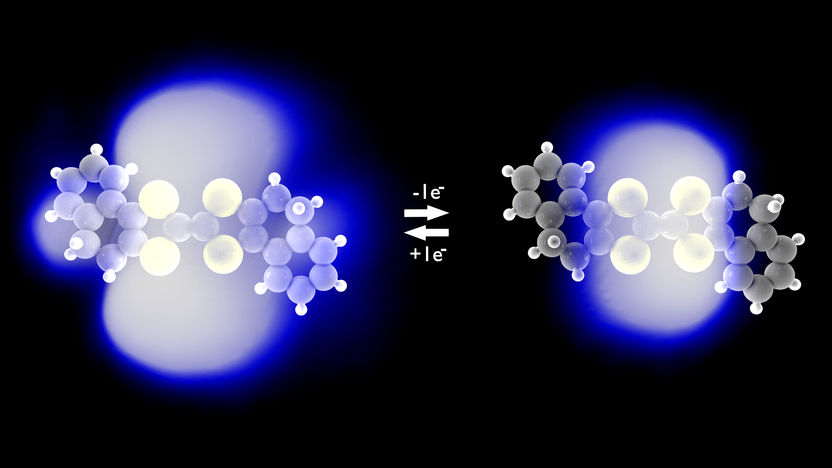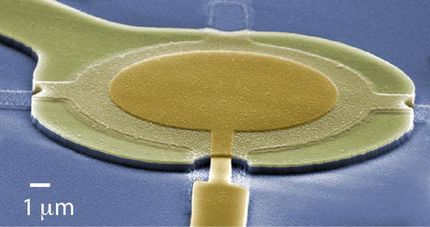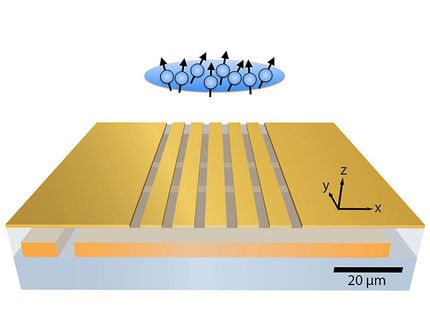Data highways for quantum information
Will emails be quantum encrypted in the future? Will we be able to teleport quantum states over large distances via ordinary glass fiber cables? Laser-cooled atoms which are coupled to ultra-thin glass fibers are ideally suited for applications in quantum communication. Researchers at the Vienna University of Technology have now demonstrated experimentally that such glass fibers are capable of storing quantum information long enough so that they could be used for entangling atoms hundreds of kilometers apart. This constitutes a fundamental building block for a global fiber-based quantum communication network.

Atoms, coupled to a glass fiber - the basis of the worldwide communication network of the future?
TU Wien
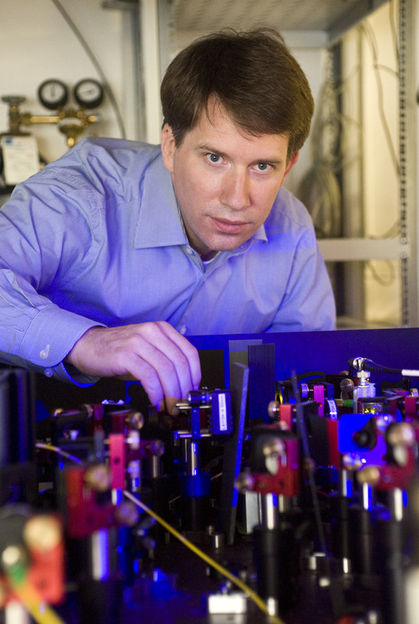
Prof. Arno Rauschenbeutel
TU Wien
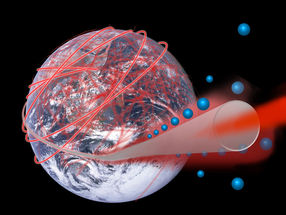
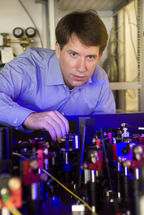
Atoms and light
“In our experiment, we connect two different quantum physical systems,” explains Arno Rauschenbeutel (Vienna Center for Quantum Science and Technology and Institute of Atomic and Subatomic Physics of the Vienna University of Technology). “On the one hand, we use fiber-guided light, which is perfect for sending quantum information from A to B, and, on the other hand, we rely on atoms, which are ideal for storing this information.”
By trapping atoms at a distance of about 200 nanometers from a glass fiber, which itself only has a diameter of 500 nanometers, a very strong interaction between light and atoms can be implemented. This allows one to exchange quantum information between the two systems. This information exchange is the basis for technologies like quantum cryptography and quantum teleportation.
Currently, there are different approaches towards performing quantum mechanical operations and exchanging quantum information between light and matter-based memories. However, for many of these systems it is challenging to store and to retrieve the information efficiently. The method that has been developed at the Vienna University of Technology straightforwardly overcomes this problem: “Our setup is directly connected to a standard optical glass fiber that is nowadays routinely used for the transmission of data,” says Rauschenbeutel. “It will therefore be easy to integrate our quantum glass fiber cable into existing fiber communication networks.”
Robust quantum memory
In the past, the researchers already demonstrated that atoms can be controlled and efficiently coupled to glass fibers. However, so far, the suitability of the fiber-coupled atoms for storing quantum information and for long-distance quantum communication remained an open question. –After some time, the quantum information stored in the atoms is lost as it leaks into the environment - an effect called “decoherence”.
“Using some tricks, we were able to extend the coherence time of the atoms to several milliseconds, in spite of their small distance to the fiber surface,” explains Rauschenbeutel. Light in glass fibers travels about 200 kilometers in one millisecond. As the light carries the quantum information, this defines the separation that could be bridged with such a system via the entanglement of atoms.
A realistic concept for a global quantum network
Even in regular glass fiber-based telecommunication, the range of light propagation is limited: the longer the fiber, the weaker the signal. In order to overcome this problem, repeater stations are inserted into the network. They amplify the optical signals after a certain distance. In this way, global communication becomes possible.
This simple concept of signal amplification cannot be implemented in quantum mechanics. It is nevertheless still possible, albeit more involved, to build so-called “quantum repeaters”. They can be used to link several shorter sections to one long quantum connection. Arno Rauschenbeutel is confident that his technique holds great promise: “By using our combined nanofiber-atom-system for setting up an optical quantum network including quantum repeaters, one might transmit quantum information and teleport quantum states around the world.”
Topics
Organizations
Other news from the department science

Get the chemical industry in your inbox
By submitting this form you agree that LUMITOS AG will send you the newsletter(s) selected above by email. Your data will not be passed on to third parties. Your data will be stored and processed in accordance with our data protection regulations. LUMITOS may contact you by email for the purpose of advertising or market and opinion surveys. You can revoke your consent at any time without giving reasons to LUMITOS AG, Ernst-Augustin-Str. 2, 12489 Berlin, Germany or by e-mail at revoke@lumitos.com with effect for the future. In addition, each email contains a link to unsubscribe from the corresponding newsletter.
Most read news
More news from our other portals
Last viewed contents
HLA-DR1
HLA-DR51
InfoChem releases SPRESIweb version 2.0 - New version of Web-based research tool for one of the largest structure and reaction databases worldwide launched
Researchers develop ultra-simple method for creating nanoscale gold coatings
Wayne_L._Hubbell
Category:Vanadium_minerals
Hydroxocobalamin
Agilent Technologies Opens New X-ray Diffraction Manufacturing Facility in Wroclaw, Poland
Rheopecty
Dichlorocarbene
Edwin_B._Hart
